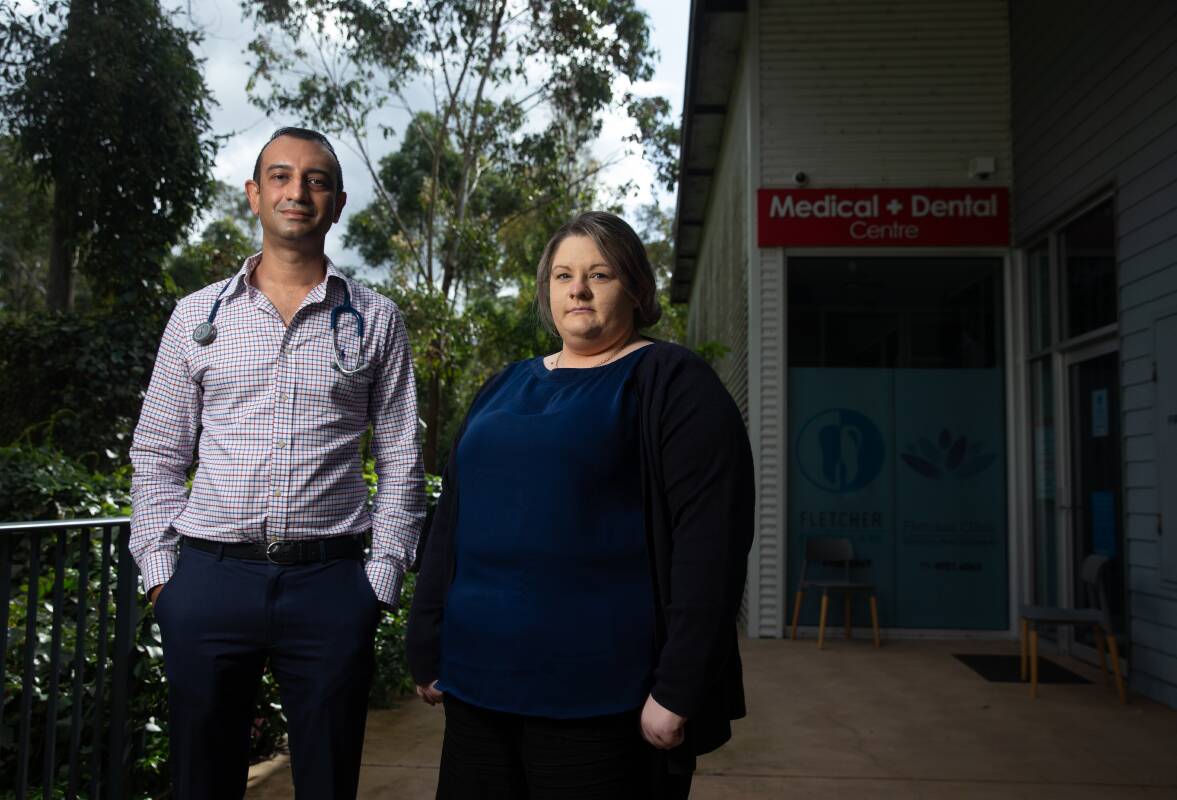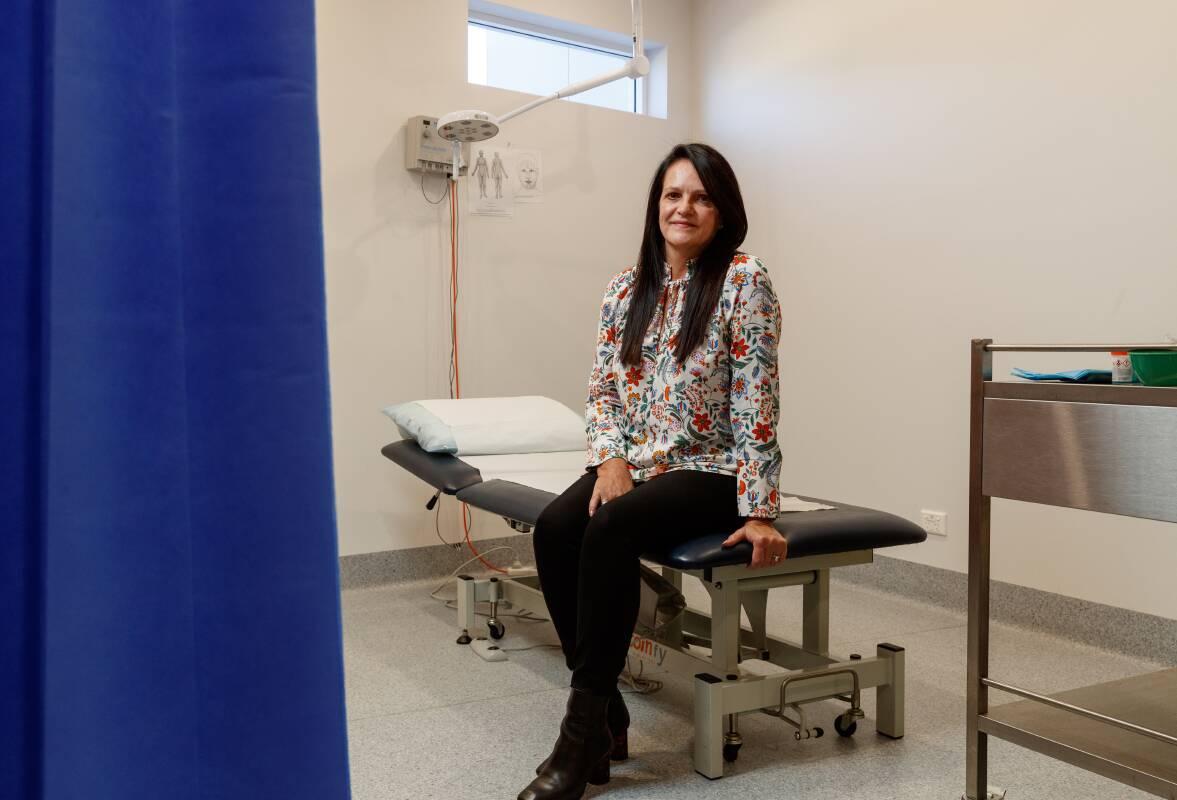
A CRITICAL shortage of GPs could soon leave some Hunter towns "up the creek" without a doctor.
National modelling predicts there will be a shortfall of almost 11,500 GPs by 2032, but parts of the Hunter are already struggling - with Cessnock, Murrurundi, Scone, Denman, Merriwa, Muswellbrook and Singleton identified as being particularly vulnerable.
Most of the 404 practices in the Hunter and Central Coast are actively recruiting doctors already, as they grapple with an increasing workload, a retiring workforce, and fewer medical graduates pursuing a career in general practice.
The Hunter New England and Central Coast area has lost close to 100 GPs in the past few years. Unless the trajectory changes - and soon - the region's Primary Health Network (PHN) says it will only get harder and more expensive to see a GP.
"Over time, it will reduce access for regular people in the community to see their local doctors," PHN chief executive Richard Nankervis said.
"There will be an impact in terms of increases in waiting times, but also cost, and that's a general trend that we're already starting to see across various parts of the region."
The most recent data the PHN could provide from 2020 shows one full time equivalent GP for every 1224 residents across the region.
But in areas like Dungog, that ratio jumped to more than 2900 people for every one doctor.
Mr Nankervis said there were about 1890 GPs in the region in 2018. It is now closer to 1800, and 239 of those are registrars.
Cessnock, Murrurundi, Scone, Denman, Merriwa, Muswellbrook and Singleton are among the Hunter areas the PHN has identified as being at risk of current or imminent closures.
But areas of high population growth - like Maitland and the Central Coast - are also under increasing pressure to meet the growing demand.
"It seems to be as bad as we have seen since the PHN began in 2015," he said.
"We are worried about a whole range of towns, but we have probably got about 10 towns that are of greatest concern after a couple of years of population growth."
Places like Wee Waa and Barraba only have one doctor at present. If those doctors retire, leave, or become unwell, residents will have to travel to access a GP until a replacement is found.
It comes as a Deloitte report forecasts demand for GP services will increase by almost 40 per cent by 2030.
But if the number of new GPs entering the market do not keep pace with the growing demand, there will be a shortfall of 9,298 full-time GPs - the equivalent of 25 per cent of the GP workforce - within eight years.
Since 2017, there has been a 30 per cent drop in medical graduates applying to do general practice.
"We are seeing a significant reduction in the number of medical students choosing general practice, and it is largely because more are choosing specialities, which are attractive because they are remunerated well, and often offer very good lifestyles for them and their families," Mr Nankervis said.
The region's practices say a "melting pot" of challenges, setbacks, and cuts have also contributed to this "crisis" and that there needs to be "carrots and sticks" to encourage more GPs to the industry - particularly in regional and rural areas.

'You can't replace them'
Hettie du Plessis, of Waratah Medical Services at Morisset, Kanwal and Cooranbong, says she has been left with no choice but to close the Central Coast practice next month due to rising costs and an inability to recruit replacement doctors.
"At Morisset, I have lost four doctors, and at Cooranbong I've recently had one retire - and you just can't replace them, it is a real struggle," she said.
"That's why I made the decision to bring the Kanwal doctors over here. Which is sad, because I have left people without doctors there, but financially, it just wasn't sustainable to have two practices at half capacity.
"Someone said the other day that if you dropped 1000 GPs in NSW, you wouldn't even know where they disappeared to, because we need so many. Everyone is struggling."
Ms du Plessis said there were currently 600 GP positions available from the Central Coast to Singleton as most practices, like hers, sought to recruit more than one doctor.
About 100 practices are actively advertising for doctors on the PHN and Rural Doctors Network websites. But the PHN says many practices have "given up" advertising on those sites.
Ms du Plessis said recruitment agency fees can cost practices about $25,000. But the shortage of doctors in the region was just one part of the problem.
A 2018 change that re-classified Morisset as "metro" instead of "regional" meant her doctors took a 50 per cent cut on incentives to bulk bill.
"You get $39 for bulk billing, and if you are regional you'd get another $12 for the doctor to bulk bill," she said. "Once we were changed from regional to metropolitan, that changed from $12 to $6."
Her practices offer mixed billing - but being an entirely bulk billing practice was no longer sustainable to meet operational costs.
Locations in Australia with a shortage of medical practitioners are given Distribution Priority Area (DPA) status from the federal government. This allows international medical graduates working in these areas to be eligible for Medicare.
DPA status was recently returned to Morisset after heavy lobbying from three local medical centres in the South Lakes area.
But Ms du Plessis said even with DPA status, it still takes about a year to recruit a doctor from overseas due to red tape, paperwork, and having to jump through various "hoops".
The doctor shortage meant demand was high - and their cancellation list was long - but they deliberately kept some on-the-day appointments available for patients who needed to see a GP urgently.
She said it was infuriating to have about 20 "no shows" at her practices most days - with no courtesy calls to cancel - as those spots could be given to those on the cancellation list.
Ms du Plessis and Maddie Ingall, the practice manager at Fletcher Clinic, both said the growing demands on GP services meant educating patients to book in for prescription-renewal appointments as soon as the "last repeat" sticker appeared on their script from the pharmacy had become a necessity.
Missed it by that much
Dr Poonacha Kanjithanda has spent the past two years trying to recruit a doctor to his practice.
He bought the Fletcher Clinic in 2019, and after a year their books were full.
"We couldn't offer same day appointments, and people were getting angry and upset," Dr Kanjithanda said.
For 18 months, the practice advertised through the primary health network, spent thousands advertising on Seek. At one point they had 21 recruitment agencies searching for suitable candidates while offering a $20,000 sign-on bonus.
The clinic came close to recruiting a GP a couple of times - but because those doctors were overseas-trained, they needed to work in a Distribution Priority Area.
Fletcher just missed out on meeting the criteria by "one point", as it shares a catchment area with Newcastle. This means Fletcher has the same classification as Sydney's CBD.
They applied for an exemption; wrote to local politicians. But ultimately, they still have two vacant rooms. Clinic staff hope the new federal Labor government delivers on its promise to restore DPA status to the region's practices.
Practice manager Maddie Ingall said she understood that Fletcher was not in the same boat as places like the Northern Territory, but nor was it like Sydney's CBD.
"There has to be some leeway in areas like Fletcher that are building up fast," she said.
"From 2016 to 2019 there was 7000-odd new residents in Fletcher alone. Where are they meant to go if we only have 2.5 full time equivalent doctors and no one is taking new patients?"
Dr Kanjithanda said it should never have come to this "extreme shortage" of GPs. But now he would like to see some reform with long term solutions.
The current training pathway gives medical students more exposure to hospital roles than general practice, and becoming a GP was not seen as lucrative.
"A lot of GPs will be retiring soon," he said. "Medicare rebates are not keeping up - so the pressures are building up while income is going down. Students see someone who started at the same time as me driving a Porsche versus me driving a Toyota - and they would prefer to drive the Porsche.
"But it's not just money... GPs have some lifestyle benefits that the students haven't been exposed to, because they only come in as medical students in third and fifth year to sit in on consults."
He said having enough GPs was vital, as they kept people out of the hospital system but could also recognise when someone needed emergency hospital care.
"For each person presenting to the ED who actually occupies a bed, they spend about $1000 for that patient," he said. "The government could save so much money by just funding general practice a bit better, and making sure we have the right amount of trainee doctors."
Carrots and sticks
The Hunter New England Central Coast Primary Health Network recently offered bush GP and registrar grants in a bid to help rural areas recruit doctors.
It covered recruitment costs to help entice GPs to practices in Quirindi, Narrabri, Taree, Wee Waa, Glen Innes and Tamworth, and registrars to Moree, Gunnedah and Inverell.
Dr Simon Holliday, a GP and addiction physician in Taree, said these grants were "good" and helpful - but they were only one piece of the puzzle.
"There's an enormous amount of costs involved in recruiting and in relocating doctors to rural areas," he said.
It could take years for the "small handful" of overseas-based doctors interested in working in rural areas to go through Australia's approval process. But competition was so fierce for international medical graduates too, who also needed adequate support to get settled, that it was not always financially viable or a long-term solution.
"I think we do have to ask ourselves as a nation, as a health system - why is it that we're relying on medical conscription of international medical graduates to supply health care in the bush?" Dr Holliday said.
"I think the process we've been seeing over the last decade will just continue... And unless we get some coordination and some vision to solve this, I think we're up the creek."







